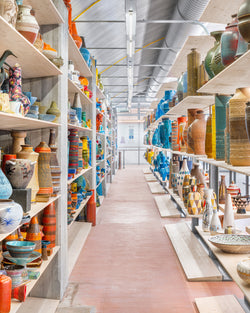Designers have spent lifetimes trying to distill the essence of what makes a well-designed object. Nifemi Marcus-Bello has an answer of his own. “The cornerstone of good design is empathy,” says the 33-year-old Nigerian designer, and founder of nmbello Studio. “But I realised early in my career that that also means empathy towards the overall ecosystem.”
Since it was founded in 2017, his eponymous practice has made empathy its cornerstone — informing objects and experiences that take into consideration “not just the end user, but the maker, designer and the planet. This of course can be tough,” he continues, “but it’s not impossible.” He makes it look easy. His pieces are moulded by their constraints, from idiosyncrasies in Lagos’s local manufacturing facilities, or the materials most readily available, to the needs of the people living and working nearby. For example: sheet metal is nmbello Studio’s bread and butter. Marcus-Bello and his team repurposes excess from a local factory that makes generator casings, and uses its machinery to manufacture their designs.






























